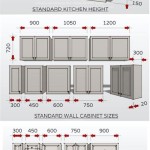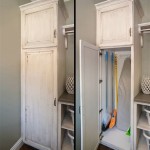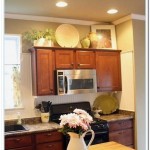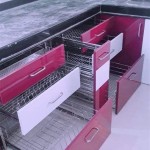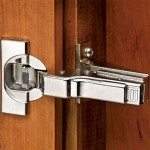Decoupage Kitchen Cupboard Doors: A Guide to Transforming Your Space
Decoupage is a versatile and creative craft that involves using various materials, such as paper, fabric, or even natural elements, to create intricate designs on surfaces. One popular application of decoupage is to transform kitchen cupboard doors, adding a touch of personality and style to the heart of your home. Decoupage on kitchen cupboard doors can be a simple yet effective way to update your kitchen's aesthetic without undertaking a full renovation. This article will explore the steps involved in decoupaging kitchen cupboard doors, highlighting essential considerations and inspirational ideas.
Preparing Kitchen Cupboard Doors for Decoupage
Before embarking on the decoupage process, it's crucial to prepare your kitchen cupboard doors for optimal results. This involves cleaning and sanding the surface to ensure a smooth and even base for the decoupage work. Here's a step-by-step guide for preparing your cupboard doors:
- Clean the Surface: Start by thoroughly cleaning your kitchen cupboard doors with a mild detergent and warm water. This removes any grease, dirt, or residue that could hinder the adhesion of the decoupage materials.
- Sand for Smoothness: After the doors have dried completely, lightly sand the surface using fine-grit sandpaper. This step roughens the surface slightly, creating a better grip for the decoupage glue. Be careful not to sand down to the wood's raw surface.
- Prime for Protection: Apply a primer to the cupboard doors. This creates a uniform surface for the decoupage materials and helps prevent the wood's natural grain from showing through. Allow the primer to dry completely before proceeding.
Proper preparation is essential for achieving a professional-looking finish. Carefully following these steps will ensure your decoupage project is successful and long-lasting.
Choosing Decoupage Materials and Techniques
The beauty of decoupage lies in its versatility. There are a wide array of materials and techniques to explore, allowing you to create a truly unique and personalized design for your kitchen cupboard doors. Here are some popular options to consider:
Paper
Paper is a classic decoupage material, offering a vast array of textures, patterns, and colors. Consider using:
- Newspaper clippings: Add a vintage feel and unique character to your cupboards with interesting headlines and black and white photographs.
- Maps: Transform your kitchen into a travel hub by using colorful maps with destinations that hold special meaning for you.
- Gift wrap: Embrace bold patterns and vibrant colors with gift wrap, injecting a playful and festive element.
- Vintage book pages: Add a touch of literary charm with antique book pages, creating a sophisticated and timeless aesthetic.
Fabric
Fabric offers a unique tactile dimension to decoupage. Here are some ideas:
- Lace: Delicate lace patterns can create a romantic and feminine touch, adding elegance to your kitchen.
- Patchwork: Combine different fabrics with contrasting textures and patterns for a vibrant and eclectic look.
- Printed cotton: Use colorful floral prints or geometric designs to inject a modern and lively vibe.
Other Materials
Explore beyond the traditional paper and fabric options. Consider:
- Dried leaves and flowers: Add natural beauty and a hint of rustic charm with dried botanical elements.
- Paper doilies: Create intricate designs and delicate patterns with paper doilies, adding a touch of vintage elegance.
- Vintage postcards: Capture memories and destinations with nostalgic vintage postcards, adding a personal touch.
Applying Decoupage to Kitchen Cupboard Doors
Once your kitchen cupboard doors are prepared and you've chosen your desired materials, you're ready to begin decoupage. The application process is simple and straightforward, and the results can be truly transformative.
- Cut and Arrange: Select your chosen materials and carefully cut or tear them into the shapes and sizes you desire. Experiment with different arrangements on the surface of the cupboard door to create a visually appealing design.
- Apply Glue: Use a decoupage glue or a PVA-based craft glue to adhere the cut material to the prepared surface of the kitchen cupboard door. Apply the glue in a thin layer, ensuring it's evenly spread to prevent bubbling or wrinkling.
- Smooth and Seal: Use a flat brush or even your fingers to smooth out any air bubbles or wrinkles. Once the glue is dry, apply a sealant like a varnish or clear acrylic paint to protect the decoupage and enhance its durability. Several coats of varnish or sealant are recommended for a long-lasting finish.
With patience and attention to detail, you can create beautiful and unique designs on your kitchen cupboard doors, adding a personal touch and making your kitchen a truly special space.

Creative Kitchen Renovation Turn Your Cabinets Into Art Hometalk

Country Kitchen With Decoupaged Veggies And Stenciled Border On Cabinet Doors Outdoor Cabinets Cupboards Paint Tiles Design

Newsprint Cabinets Aunt Peaches

Newsprint Cabinets Aunt Peaches

How To Decoupage Furniture With Fabric A Step By Guide Hometalk

Kitchen Cabinet Quick Fix Fabric Decoupage Living In A Nuts

Decoupage Fabric On Cabinets Cover In Sealer Outdoor Kitchen

Diy Decoupaged Coffee Sack Furniture Cat Litter Cabinet

More Interesting Cabinet Ideas For Vintage Kitchen

Pin By Agata Wiśniewska On Decoupage In 2024 Kitchen Cupboards Shabby Chic Paint


